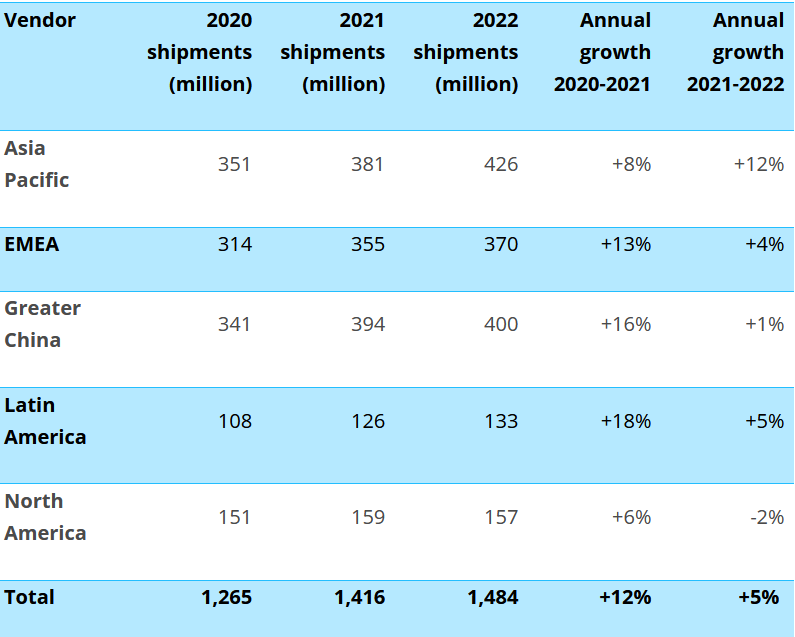A new report has revealed that the global smartphone market is expected to see a growth in shipments this year. The projected growth is around 12 percent, with total shipment figures reaching 1.4 bllion units.
According to a Canalys report, the growth in smartphone shipments is indicative of the strong recovery of the market from last year. During 2020, the shipments of handset fell by 7 percent due to the severe market constraints caused by the Coronavirus pandemic. But with the world recovering from the pandemic and vaccines being rolled out, the issue with supply of components will emerge as the new bottleneck for the smartphone industry.

As per Canalys Research Manager Ben Stanton, “The smartphone industry’s resilience is quite incredible.” He further added that “There is strong momentum behind 5G handsets, which accounted for 37% of global shipments in Q1, and are expected to account for 43% for the full year (610 million units). This will be driven by intense price competition between vendors, with many sacrificing other features, such as display or power, to accommodate 5G in the cheapest device possible. By the end of the year, 32% of all 5G devices shipped will have cost less than US$300. It is time for mass adoption.”
Although, the supply constraints for components wil limit the grwoth potential of smartphone shipments this year. For those unaware, the world is suffering from a major shortage of semiconductors and certain component materials at the moment. This has led to a build of backorders and “The industry is fighting for semiconductors, and every brand will feel the pinch,” Stanton added.

Canalys VP of Mobility Nicole Peng stated that “The other angle to this is pricing. As key components, such as chipsets and memory, increase in price, smartphone vendors must decide whether to absorb that cost or pass it on to consumers.” Furthermore, the report added that the pandemic even caused permanent changes in the market, with channels transforming having to adapt or die during the pandemic.
RELATED:






